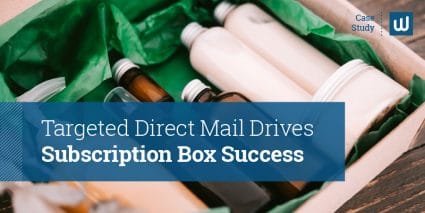Artificial Intelligence Demystified for Data-Driven Marketers
"AI” and “Machine Learning” are more than mere buzzwords. They enable predictive analytical systems that deliver real results when it comes to data analysis and marketing audience creation.

When you hear the term “Artificial Intelligence,” or “AI,” there are likely a few preconceived notions that come to mind. Maybe a futuristic robot that walks, talks, makes you the dinner you were craving, and queues up a movie you would like to watch. Or perhaps it sounds like an overused buzzword—an intangible term that you don’t fully understand but feel that you should be using to keep up with the times.
The reality is that AI is a powerful tool that delivers real results in marketing campaign performance. By learning the basic principles of AI, marketers can gain more confidence in how impactful AI programs are in analyzing data assets and producing audiences that deliver high campaign response and conversion rates.
Simply defined, AI is a software program that makes its own decisions about how to solve a problem or accomplish a task within a set of rules determined by a data scientist. There are two primary types of AI: Artificial General Intelligence (AGI) and Artificial Narrow Intelligence (ANI). AGI is the human-like intelligence that many Hollywood moviemakers have sought to portray, usually in dystopian terms. On the other hand, ANI—also known as machine learning—is the real-world AI that operates within Wiland’s analytics platform. It is a crucial element in creating audiences with the highest likelihood to engage with and respond to a brand’s marketing campaigns.
ANI programs consist of any number of different algorithms—of which there are myriad—that all work toward a goal specified by a data scientist. ANI will focus only on that one goal and will make its own choices as to how to achieve it. However, there is a common misconception that AI programs operate completely independently. AI still requires the guidance of a data scientist. For instance, a data scientist might give an AI program the goal of winning a game of Tetris. If “winning Tetris” is defined as never letting a Tetris block touch the top of the screen, the AI program might pause the game, freezing it to ensure that no more blocks build up and thus consider its task accomplished. But a data scientist will set boundaries to ensure that AI results are usable; in this case setting a rule that “blocks need to continue falling” as a condition to the task being achieved.
One of the key advantages that AI programs provide to marketers is the effectiveness and efficiency with which they analyze huge volumes of data to find variables that predict optimal response when creating marketing audiences. Massive data can be challenging to harness to its full potential. This is especially true of a cooperative database, which is enormous due to the amount of data being ingested. For instance, the Wiland Cooperative Database consists of data from thousands of clients covering $1 trillion+ in spending of over 250 million U.S. adult consumers, billions of purchase intent signals, and billions of social media signals. While traditional modeling techniques provide value in analyzing the strongest predictors of purchase and donation behavior, AI is vital in taking all of these diverse signals into account, evaluating correlations in the data that no amount of human analysis could approach.
AI techniques analyze the complicated ways in which predictors within the data interact with each other. Data sets become hugely multidimensional when such interactions come into play, and a model that can be built by an individual data scientist simply doesn’t have the power to consider all of the possible combinations. Audiences created using AI thus tap into complex patterns that reach beyond intuitive correlations to find unexpected connections of data points, resulting in even more accurate predictions of response.
So how can marketers make use of the predictive power of AI-enabled audience modeling? By working with a qualified audience and data partner that uses myriad types and sub-types of AI in their modeling environment—a partner whose data scientists can utilize those techniques to uniquely benefit each client. At Wiland, we combine our historical knowledge of proven modeling systems with innovative AI in our proprietary modeling platform to determine the best methodologies to use for each brand or organization we serve, creating audiences that enable our clients to reach the people most likely to respond and engage with them.
So, while we may not be able to offer an AI-enabled robot to prepare your favorite mid-day snack to tide you over until dinner, we can certainly offer AI-enabled audiences that will fuel your revenue growth.
Tags: advertisers artificial intelligence cooperative database custom audiences predictive modeling




